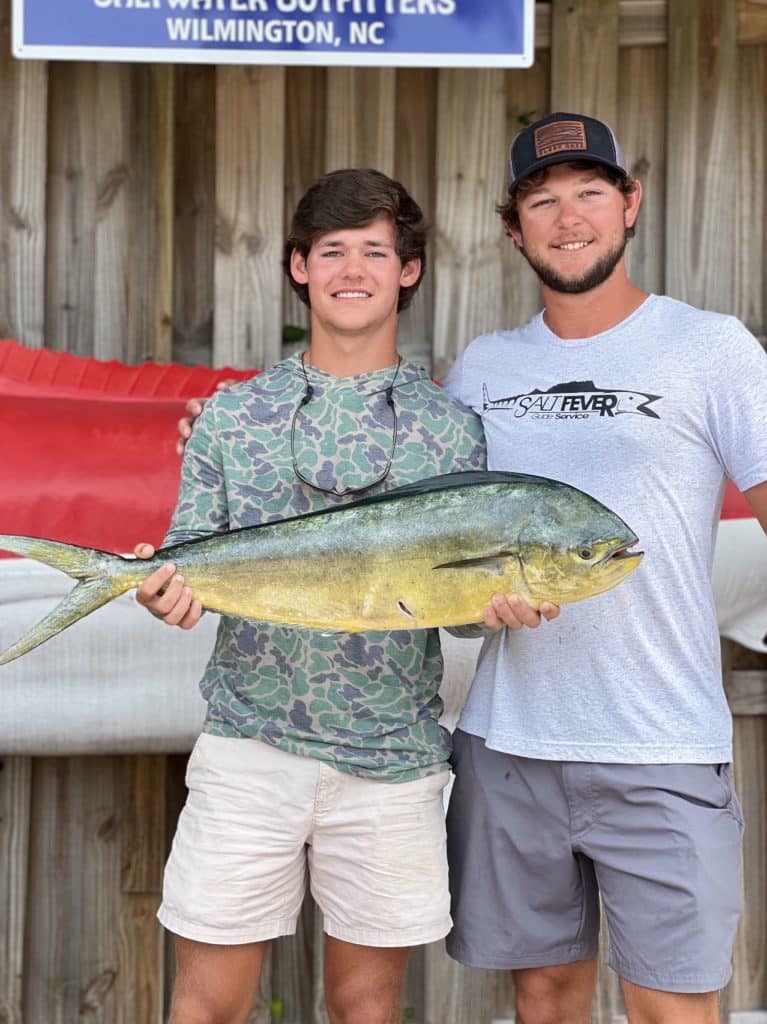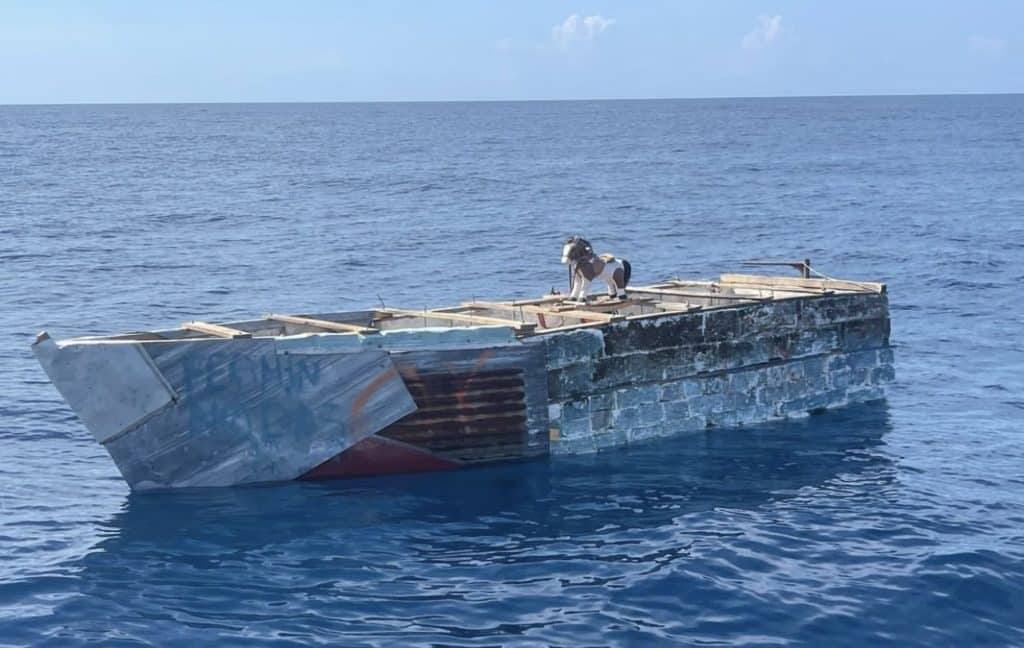
The charter fishing trip on June 8 started out great for Captain Tyler Hailey and his fishing crew aboard the 37-foot Freeman boat “Glory Daze” running out of Ocean Isle Beach, North Carolina.
On board were mate Bailey Auten and six members of the Noonan family from Sumter, South Carolina. They were celebrating the recent graduation of 18-year old Charlie Noonan from high school with a gift of an offshore fishing trip.
“Offshore I spotted an abandoned Cuban raft, which we see plenty of these days, and got to it as it was just getting light from dawn,” said Captain Hailey, 25. “There were a couple dolphin and a cobia hanging under the raft and we caught-and-released the cobia, which was just a half-inch short of being legal.
“Then we tried for the dolphin, but they just wouldn’t hit. So we ran farther offshore for some bottom fishing.”
Over the course of the day the charter anglers caught a six-person limit of vermilion snapper, 20 silk snapper, plus some triggerfish. Then it was time to head back to port.
Second Chance

“I figured we ought to check that raft a second time and maybe the dolphin would cooperate,” says Hailey. “We pulled up near the raft and the two dolphin were still there. We pitched a ballyhoo bait rigged to ‘J-hook’ to them, and one of ‘em raced out from the raft and just ‘molly-whopped’ that bait—slammed it like a lightning bolt.”
The fish fought hard and jumped like dolphin do. Charlie Noonan fought the fish well using an Okuma Cedros 7-foot PCH custom rod and Okuma Cedros 8000 reel. Soon the fish was brought boatside, it was gaffed and put on the deck.
“That’s when I noticed that dolphin didn’t look quite right,” said Hailey. “I didn’t say much about it, but thought it sure looked like a pompano dolphinfish. I didn’t want to be wrong about it because it was huge, much bigger than any I ever heard about.”
Hailey tried to catch the second dolphin at the raft, a bigger bull he figured would weigh 20 pounds. But it wouldn’t hit. He noticed the second dolphin had a bright red marking tag. He thinks it was a regular tagged dolphinfish, as the two different species sometimes school together and in the water look identical.
Hailey attended Cape Fear College and has a degree in marine technology.
“We spent a lot of time studying fish and learning precisely how to identify and differentiate species,” he says. “And Charlie’s dolphin just wasn’t normal.”
ID, Please
Hailey kept his thoughts to himself until they returned to the marina at Ocean Isle Beach. There, Hailey’s friend Captain Anthony Whitford, was asked to look at the fish. Whitford has lots of experience with pompano dolphinfish when he used to charter out of Islamorada in the Florida Keys.
Whitford was shown Noonan’s fish and his eyes grew big with excitement, saying it was the biggest pompano dolphinfish he’d ever seen.
“They catch a lot of pompano dolphinfish in the Florida Keys,” explains Hailey. “But they’re small, just a few pounds at the most. Folks usually just release ‘em not even knowing they’re a different species of dolphinfish”
Immediately they contacted the N.C. Marine Fisheries department, who they met the next day at a tackle shop in Wilmington where Noonan’s fish was officially weighed at 11.54 pounds on certified scales. The fish had an overall 36-inch length, 17.25-girth and was positively identified by a state biologist as a pompano dolphinfish (Coryphaena equiselis).
Already Charlie Noonan’s fish has officially claimed the North Carolina state record for the unusual species. Paperwork for IGFA recognition has been completed and sent in.
IGFA only recognizes one entry in its records of pompano dolphinfish, which is currently the All-Tackle record at 8-pounds, 8-ounces, taken from Baltimore Canyon, Maryland in Aug. 2008 by angler Charles Chompon.
New Record?
At 11.54 pounds, Charlie Noonan’s pompano dolphinfish easily should be the new All-Tackle record for the species.
“The two species of dolphinfish look a lot alike, but the dorsal fin is different between them,” says Hailey. “The sure ID for the two species is the tooth patch on the tongue is radically different between the two. A standard dolphin has an oval formed tooth patch. While the pompano dolphinfish has a tooth patched shaped much differently, making a 90-degree turn. It’s easy to see and determine once you know what to look for.
“And we’ll be watching those tongue tooth patches much closer from now on.”
Standard-issue dolphinfish (Coryphaena hippurus) also are much larger on average, with 10 to 20 pounders common and fish weighing to nearly 90 pounds on record.









